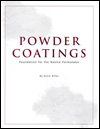Sherwin-Williams to Supply Protective Coatings for Cleveland Bridge Project

Coating manufacturer Sherwin-Williams was chosen by Atlantic Painting, Oak Lawn, IL, to supply high-performance protective coatings for the Ohio Department of Transportation’s (ODOT) I-90 Innerbelt Bridge project. Coating work is now underway on the 1.8 million square feet of steel that comprise the westbound span over the Cuyahoga River. Reconstruction of the bridge, which opened to traffic in 1959 and is the main east-west artery into and through downtown Cleveland, is the largest project in ODOT’s history. The new bridge, which is north of the existing span, will be 4,247 feet long and stand 120 feet over the Cuyahoga River Valley at its highest point.
To give the bridge a high-gloss finish and protect the structure from the harsh Cleveland elements, Sherwin-Williams will supply Macropoxy 646, an epoxy intermediate coating, and HP DOT acrylic polyurethane, a high-gloss topcoat in off-white, for the project. The company is also providing Zinc Clad IV organic epoxy that will be used by Atlantic’s field painters to touch up the shop-primed steel sections and splice plates. More than 26,000 gallons of coatings will be used for the project.
“ODOT needed high gloss, a low film build of 2-4 mils with higher-build performance, superior weathering and ease of application,” said Dee McNeill, Regional Market Director, Bridge & Highway, Sherwin-Williams Protective & Marine Coatings. “These products will achieve all of those requirements. As a company headquartered for nearly 150 years in Cleveland, it is gratifying to be an asset protection partner on an infrastructure project that is such a vital link to the city from points near and far.”
Although not all states require steel bridges to be coated, ODOT does stipulate protecting its bridges in this manner. McNeill said bridges in Northeast Ohio must stand up to some of the most rigorous inspections there are, given the constant expansion and contraction caused by thermal cycling and exposure to road salt and airborne contaminants from Lake Erie winds.
The project design and product specifications address these issues. Because of the level of degradation and corrosion that can occur at structural joints, ODOT wanted to limit their number. The old bridge had joints at every one of the 14 piers, but in the new design there are only two.
In addition, QUV accelerated weathering tests (5,000+ hours of UV exposure is Ohio’s standard) and field experience document the gloss retention of the Sherwin-Williams topcoat, which doubles the maintenance-to-recoat cycle, McNeill said. “Our testing demonstrates gloss retention even after 9,000 hours of exposure. This considerably extends the lifecycle of the coating and provides unprecedented value for the taxpayers,” he noted, saying the bridge would likely only need to be repainted two or three times during its 75-year design life.
The project is unusual in several ways. ODOT used a value-based design-build approach (vs. design-bid-build) for the first time, to expedite the work and minimize disruption to both local motorists and those traveling between Chicago and the Northeast United States.
In addition, the bridge’s architecture has distinctive delta-shaped girders that complement the Cuyahoga Valley topography without dominating it. The design teams that competed for the work were evaluated on their ability to deliver on not just cost and an ambitious schedule, but also on preserving the aesthetics that define this part of Cleveland’s landscape. The project was awarded to general contractor Walsh Construction in partnership with HNTB Corp., the lead architectural and engineering design firm, and HDR, the independent quality-engineering firm.
Looking for a reprint of this article?
From high-res PDFs to custom plaques, order your copy today!






